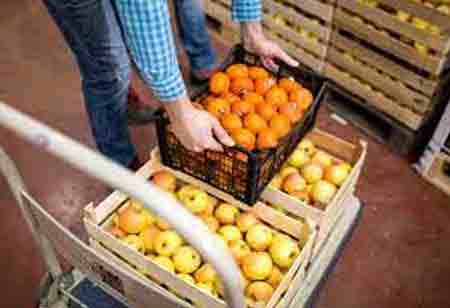THANK YOU FOR SUBSCRIBING
Be first to read the latest tech news, Industry Leader's Insights, and CIO interviews of medium and large enterprises exclusively from Food and Beverage Tech Review
How Technology is Making Food Trackability Easier in the Supply Chain
In recent years, food traceability has gained extensive attention from both producers and consumers. Tracking food in the supply chain makes it easier for manufacturers and producers to meet FSMA food safety rules and prepare for potential eme

By
Food and Beverages Tech Review | Friday, June 18, 2021
Stay ahead of the industry with exclusive feature stories on the top companies, expert insights and the latest news delivered straight to your inbox. Subscribe today.
In recent years, food traceability has gained extensive attention from both producers and consumers. Tracking food in the supply chain makes it easier for manufacturers and producers to meet FSMA food safety rules and prepare for potential emergencies such as foodborne diseases.
FREMONT, CA: Since the food supply chain is complicated, it is difficult to track products in real-time. For perishable food products requiring constant temperature monitoring, traceability helps ensure that temperature controls are performed as needed and that products are not in an uncontrolled environment. Food traceability technology is now switching to a data-driven approach to closely tracking products. Some of the most common technologies used in the food supply chain are:
 Barcodes: Barcodes were introduced to supermarkets in the early 1970s and remain the most widely used track-and-trace technology in the food industry. The Universal Product Code (UPC) stickers on individual food packages, which are read by machines and scanners, contain information such as the manufacturer code and the product code, verified at various stages throughout the supply chain.
Barcodes: Barcodes were introduced to supermarkets in the early 1970s and remain the most widely used track-and-trace technology in the food industry. The Universal Product Code (UPC) stickers on individual food packages, which are read by machines and scanners, contain information such as the manufacturer code and the product code, verified at various stages throughout the supply chain.
Warehouse Management Systems (WMS): Warehouse management software functions as a storage site for data collected through RFID tags or barcodes that anyone who needs to reference or monitor can access. Tracked shipment data stored in WMS is crucial during a product recall.
Radio Frequency Identification (RFID) devices: Small RFID chips are long used to trace data across various inventory systems. RFID tags attached to product packages collect radio frequency signals from an RFID scanner. The RFID tags return signals to the RFID scanner, which decodes the encrypted data. RFID devices are used to scan products entering and exiting a warehouse automatically.
Internet of Things (IoT): IoT is increasingly used to provide real-time supply chain data, including food data. Digital tags and sensors, coupled with other data integration tools and equipment, can help identify and track food products through artificial intelligence (AI).
Blockchain-based applications: Blockchain technology traces food to travel from farm to table to improve transparency, speed recalls and avoid food fraud. Blockchain-based traceability could give consumers the ability to scan a QR code displayed on a food product label and find information about the product and its producers, processors, and journey back to the farm that grew it.
Food-sensing technologies: Together with image analysis and hyperspectral imaging, food-sensing technologies such as biosensing can evaluate a food product to classify its components or potential contamination risks.
See Also: Top Food and Beverages Consulting/Service Companies
I agree We use cookies on this website to enhance your user experience. By clicking any link on this page you are giving your consent for us to set cookies. More info







